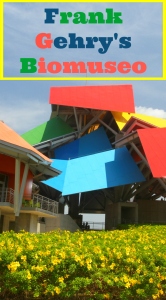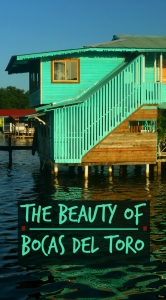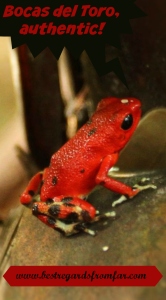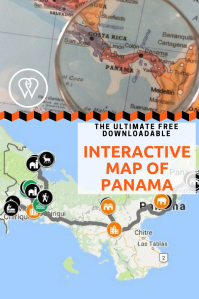“Position your nose inside the cup and inhale. Just close your eyes and smell thoroughly.” My hands are wrapped around a warm coffee cup while I am distinguishing the elegant flavours. “Now move your nostril along the ridge of the cup and smell again. What do you smell now?”
I am trying to recognize the different scents: honey, a trace of jasmine, a hint of fruits, an orange aftertaste. This coffee is not just a regular coffee: I am tasting the best coffee of the world! Indeed, the Geisha coffee from the mountains of Boquete, Panama, has been acclaimed by worldwide independent tasters as the best, with its price reaching up to $350 for a pound of its unprocessed green beans.
With great gifts from nature come great responsibilities. Maria Ruiz, the 4th generation of the Ruiz family coffee growers is well aware of this. “Coffees are like good wines: they have their own terroir defined by the soil, the climate and the specific microclimate of the plantation. The way the beans grow and are roasted gives them their unique characteristics. But coffee is a fairly new product: we need to educate people about how to taste and appreciate it”. Maria smiles as she sees my surprise: “Only 900 years of history… Compared to wine, or olive oil, that’s nothing!”
I’m French, with part of my family from Burgundy, where wine and terroir are religions; wine making and tasting, respected and refined arts. I can relate to what Maria is trying to explain. I had the privilege of dining at the Michelin-star restaurant La Tour d’Argent in Paris, and I vividly remember its wine list, as thick as a bible with 15,000 references of different grapes, regions, vineyard, years,… And coffee choices limited to espresso, cappuccino or decaffeinated. Maria has a point, and the refinement of wine tasting can easily be extended to coffee, I realize while learning how to appreciate my cup of Geisha coffee: the fragrance of its ground beans, its aroma after adding hot water, its body, acidity, flavor, and after taste.
“The Geisha coffee comes from a special bean and is a very complex coffee.” Maria explains. The tree, originally from the Gesha area in Ethiopia was introduced in Panama in the 1960’s. Now grown only in Panama, its tree is not very productive. The beans are very sensitive, making the roasting very delicate. “They are long and narrow, so they reacts fast and they are at their best when only lightly roasted: if I blink, it’s gone!”, Maria describes. “I am the only one roasting the precious Geisha beans: at least when it goes wrong I can only be mad at myself”, she giggles.
We are interrupted by Carlos, a passionate guide at the Ruiz coffee plantations. “Are you guys ready?”, he asks us with a smile when I am about to take another sip of the Geisha coffee. Maria sees my puzzled face, “No worries, go explore the fields and let Carlos show you the whole process of coffee making. We will resume our Geisha coffee tasting later, once it is cold.”
Cold?! I understand it is a very pricey and rare coffee, but… My thought process is interrupted by Maria pouring the Geisha coffee into my cup after our inspiring visit of the farm (stay tuned article to be published soon). Reluctantly, I bring it to my lips and take a sip. When I was expecting bitterness, I am surprised by the freshness and fruitiness, a completely different sensation compared to the hot tasting. Maria doesn’t look surprised. “In Europe, you always drink the Italian dark roasts. Of course it tastes bitter! The beans are almost burnt and this covers up their actual flavours.” I realize I have so much still to learn about coffee, and this visit has opened a whole new world for me. Polishing up this article, I put down my coffee mug brewed with the last beans I have left from Café Ruiz. Beyond the black liquid, I see all the love and attention that is put into the delicate craft of coffee making. Simply gulping down a cup before going to work has become a big no go. Thanks to this eye-opening visit, I have learnt how to truly appreciate the black gold mother nature provides and no coffee will ever taste the same.
Claire & Marcella
Travel tips:
- From the city centre of Boquete, it is a nice stroll up north to Café Ruiz from where you can take part in three different tours: the art of tasting coffee, the short coffee story, or the coffee fruit and its seeds. Check the website for bookings or stop by the shop.
- Café Ruiz is present in Casco Viejo, in Panama City where you can enjoy a cup and buy some beans.
- If you are not going to Boquete but are tempted to taste this delicious coffee, you may find some close to you.
- To enjoy a delicious cup of coffee, you can sit down at their terrace in Boquete and order the best coffee in the world. No worries, if you cannot afford a $9,- cup of Geisha, there are totally affordable and delicious other varieties, as well as tastings of 3 different roasts.
- Take a visual tour of Panama!
- Check out this interactive map for the specific details to help you plan your trip and more articles and photos (zoom out) about the area!
Like it? Pin it!

Don’t know where to start? Get inspired:














This was a really interesting read. Never knew about the coffee in Panama before this.
Thanks for your feedback! You should try it: it’s really good 🙂
I like tasting coffee from different places. Our local coffee is very strong and distinct.